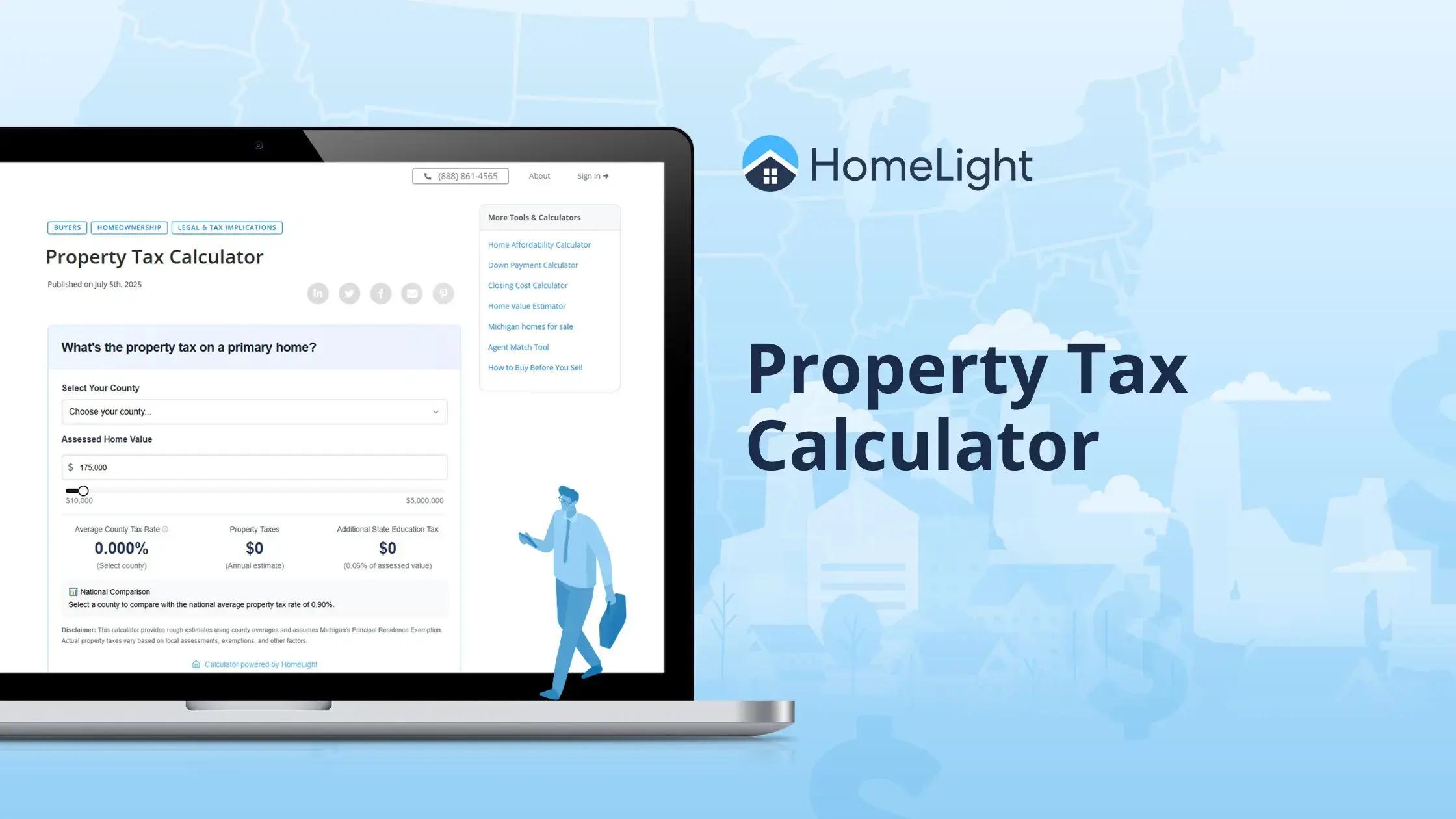
DISCLAIMER: This article is meant for educational purposes only and is not intended to be construed as financial, tax, or legal advice. HomeLight always encourages you to reach out to an advisor regarding your own situation. If a buyer asked you to front them the money to buy your house from you, you’d think they were crazy. It’s up to your buyer to figure out a way to pay for your house, right? Believe it or not, there are actually home sellers who offer to loan buyers the money to purchase their property: it’s called owner financing. Also known as seller financing or a purchase-money mortgage, owner financing is an arrangement where the home buyer borrows some or all of the money to purchase the house from the current homeowner. In some cases, this occurs because the buyer doesn’t want—or can’t qualify for—a traditional mortgage from a traditional lender. In other cases, the seller lends the buyer an amount that’s in addition to their traditional mortgage to make up the difference between the amount approved by the bank and the agreed on price of the house. For example, let’s say the accepted offer between the buyer and seller is $300,000. The buyer has 20%, or $60,000, to put down on the house, but their mortgage company only approves a loan of $200,000. With seller financing, the seller can lend the buyer the additional $40,000 needed to make up the difference. However, seller financing isn’t generally expected to be a long-term arrangement. It’s typically a short-term solution until the buyer can arrange a traditional loan for the full mortgage amount—normally within a few years. Since that’s the case, the terms of these loans are often designed to motivate the buyer to seek out alternative financing. For instance, the terms may include significant annual interest rate increases, or a balloon payment scheduled for only a few years into the loan. The good news is that, while this arrangement is a private mortgage loan between two private citizens, it is a legally binding contract with terms, conditions, and requirements to which both parties must adhere—and recourse if the contract terms are violated. The bad news is that it’s a private loan between two private citizens. And if you’ve ever run into trouble lending money to family or friends, it’s only natural for the seller to be concerned about lending an even larger sum to a stranger. “Seller financing can go really well if you’re dealing with financially solvent people who have good jobs and are honest,” says Edie Waters a top-selling agent in Kansas City, Missouri, who’s sold over 74% more single-family homes than her peers. “That’s the biggest risk the seller takes: ‘Is this person honest? Are they going to abide by the terms of the loan?’” “Seller financing is very rare,” explains Waters when asked about how common seller financing is these days. But that wasn’t always the case. In fact, the popularity of seller financing is influenced by interest rates. “Right now we’re not in this type of market, but in the ’80s, the interest rate was 18%,” says Waters. “And those interest rates went up very quickly. So let’s say the seller back then had a loan at 8%, but their buyer can only get an 18% interest rate. That’s a 10% gap.” This common situation back in the 1980s, was why seller financing and the contract for deed became a popular alternative. Instead of paying the bank 18% interest, the seller would keep their 8% mortgage, and charge their buyer 12%-15% in the new, seller financed mortgage. However, these days, it’s only wise to offer seller financing on a home that you own outright, not one that’s still carrying a mortgage. Otherwise you might run into issues buying another home. If you’re still paying a mortgage on the home you’ve seller financed, you’ll be responsible for and have to qualify for both mortgages. “Today, I would not recommend that a seller offer owner financing if they still had a loan on their home,” advises Waters. “Not unless they could just absolutely afford it, and wanted to use it for a tax deduction.” If you do run that risk, you could be stuck paying both mortgages if your buyer defaults on the loan.
There are a lot of pros and cons to owner financing, but perhaps the biggest risk that the seller needs to worry about is buyer default. “Seller financing works fine as long as you dot your i’s and cross your t’s. But you, as the seller, need to prepare that probably anywhere from 60% to 70% of the time you’re going to get that house back,” advises Waters. Remember, buyers who ask for seller financing typically can’t qualify for a traditional mortgage, or at least not for a loan large enough to cover the full home price. Which means that they are high-risk borrowers. High-risk buyers are more likely to default, but that’s not the worst part—if they refuse to leave. If they just stop paying you, but don’t vacate, you’ll have to foot the bill to foreclose on the house. Occupants facing foreclosure aren’t likely to spend time and money taking care of a home they no longer own, so there’s no telling the condition the place will be in when all is said and done. “There’s a lot of risk on both sides, but there’s a lot more risk in it for the seller,” says Waters. Aside from the fact that there’s a high probability that you’ll become financially responsible for the seller-financed property again, you may not be able to structure the terms of the loan exactly as you’d like. After the housing market crash during the 2008 financial crisis, the federal government instituted the Dodd-Frank Financial Regulatory Reform Bill. Unfortunately, those reforms even impact private loans—which means you may not be able to include that incentivizing balloon payment after all. Finally, since you’re the one lending the money, you’ll only be getting paid in small installments over a period of time, just like a regular lender. In other words, you won’t be able to access your full equity in the home you sell to help you buy another one. The news isn’t all bad, though. “The tax benefits are potentially huge for sellers financing their buyers,” says Waters. We always advise that they visit with their financial advisor to make sure they understand all the tax rate pros and cons.” Since your buyer is paying you in small increments over a period of several years, the government regards this as an installment sale which comes with significant tax breaks. Plus, as you are the lender, you don’t have to worry that the buyer’s mortgage company will demand expensive repairs or upgrades before approving the loan—you can simply sell your home as-is. The biggest pro is that as the lender, you retain the title to the property until you’re paid in full, so if your buyer does default, the house is still yours—no matter how much money they’ve already paid toward their mortgage. If it sounds like seller financing is the right option for you, then you’ll need to know what to do: The first thing you need to do is make sure you’re financially secure enough to face the risks that come with seller financing. It’s not enough to simply own the house outright—you should also have enough money saved to cover repairs, taxes, insurance, and any other expenses you might need to cover until you can get the house sold again. You’ll also want to check with a real estate attorney on what the legal requirements are to offer seller financing, at both the state and federal levels. After all, the last thing you want to do is lose your house because of a poorly-written loan contract that doesn’t meet state or federal law requirements, and other seller financing restrictions. “If you’re going to offer seller financing, you need to understand your state laws,” advises Waters. “For example, let’s say your buyer loses their job, stops making mortgage payments and defaults on the loan. You need to understand the eviction process and how long it might take, because you need to have that money set aside to cover expenses on that house for the duration.” “Neither a borrower nor a lender be,” Lord Polonius famously says in Shakespeare’s Hamlet. That’s because lending to family and friends has been known to ruin relationships. While you don’t have to worry about wrecking friendships when you lend to a stranger, it comes with the added risk of an unknown quality. So the next best step to take when you’re offering seller financing to an unknown borrower is to run financial background checks like a traditional mortgage. “Seller financing can be a real challenge unless you know the buyer,” says Waters. “You definitely want to do your research upfront on your buyer just as if you were a lender. You’ll want to get their tax information, their job history, and what kind of bank reserves they have. Find out if they’re currently gainfully employed. Check court records for any pending litigation against your buyer. You should also pull their credit report, so you have a deep understanding as to why they aren’t qualifying for a conventional loan.” And that’s just the start of doing your due diligence. You also need to find what kind of person they are, so you can gauge their level of responsibility, interest and willingness to pay their debts. “Request a set of references and call them—three deep. Ask each one to give you another reference, because by the time you go three deep on one reference, the third person you talk to will give you the true story on what your buyer is really like.” The third step is just as important as the second—and that is making sure that the mortgage loan contract you draw up is airtight. “You do have to be careful to follow the guidelines of the loan contract. It needs to detail the exact condition of the house,” explains Waters. “And the buyer needs to understand that the seller is just loaning the money, the maintenance is entirely the buyer’s responsibility. So, if the dishwasher breaks, the buyer needs to replace it.” The contract needs to mention more than just the house itself, but everything in it—in detail. We’re talking everything. Of course you’ll think to include the big things like the refrigerator, stove, dishwasher, or hot tub. But you need to cover little things, too, like doors, sink and fixtures, even copper piping or wiring. Why? Because if your buyer does default, there’s always a chance they’ll strip the house bare and sell everything—including the kitchen sink—just to have some pocket change to help them start over again. If you haven’t detailed these items in the mortgage contract, you’ll have a hard time going after them to get the damage covered and the items replaced. It also needs to detail that the buyer is responsible for all other financial obligations that come with buying your home, such as property taxes or HOA fees. If your buyer doesn’t pay these fees, the government or HOA could put a lien on the property or even start foreclosure proceedings. And since the title is still in your name in a seller financing situation—this puts you at risk. Last but not least, the contract needs to spell out the financial details, like the purchase price and repayment schedule—along with all repercussions and recourse if the buyer fails to meet the terms of the loan. This also includes the agreed-upon interest rate. “Typically with seller financing, the buyer is charged a higher interest rate,” explains Waters. “If you’re selling financing in states like Missouri and Kansas, you can charge a 15% interest rate—even if the going rates are 5% right now—because you’re making a private sale. You’re not a Realtor, so you don’t have to follow the law.” Once the contract is ready to sign on the dotted line, there’s just one last thing you want to do: collect a hefty earnest money deposit. “With seller financing, always ask for a big upfront deposit that’s nonrefundable. So, if you’re selling the home for $200,000, then the expectation would be $10,000 to $20,000 nonrefundable down upfront,” advises Waters. “You need to make sure that the buyer not only gives you their earnest money, but you actually need to cash the check and make sure it doesn’t bounce.” This money isn’t just earnest money to show they’re interested, you’re going to need that amount set aside as an insurance policy in case the buyer defaults. “If you’ve got a defaulting buyer who won’t leave readily, you’ll have to hire an attorney to evict them, which usually takes 90 days,” explains Waters. “During that time, you’re going to have to cover housing expenses, plus the attorney’s fees. And if the buyer didn’t take care of the home, you may need to spend more on things like paint or carpet to sell it again.” “So let’s say you need $6,000 to cover all housing costs, then an attorney’s going to charge anywhere from $2,000 to $4,000. Add on another $5,000 to $10,000 to cover the cost of getting it ready to list, and that’s a total of $15,000 to $20,000. You need to have all that money set aside for that emergency.” Seller financing is rare these days for good reason. It’s a tricky financial arrangement that comes with a lot of risk for the seller. That’s why many experts recommend sticking with a traditional mortgage. “Truthfully, doing a 5% conventional loan or 3.5% FHA loan is better for the buyer and safer for the seller,” explains Waters. However, if the pros outweigh the cons in your situation, seller financing can be done successfully. Just make sure you consult with the right professionals to help you through the complex process—including a top real estate agent.
What is owner financing?
Is owner financing a common practice?
What are the pros and cons of owner financing?
If it goes bad, the buyer will get a bad credit report, down to 500 or less if they default on a loan. But the seller is stuck with the house and the condition it’s in. They’re stuck with all the needed repairs, the cost of fixing it up, all the added wear and tear on things like the roof, the appliances and the HVAC. And they’re stuck with the time and expense of selling it again. So you have to be okay with the risk involved.
What steps do I need to take to offer seller financing?
Step 1: Check on the financial feasibility and legal requirements.
Step 2: Vet your buyer.
Step 3: Draw up the loan terms.
Step 4: Collect the earnest money (and save it).
Is owner financing right for me?


